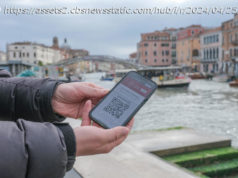It looks like America will miss out on an important trade deal.
On January 23, only three days into his administration, President Donald Trump withdrew from the negotiations process over the Trans-Pacific Partnership (TPP), the gargantuan free-trade agreement that he’d railed against on the campaign trail as a job killer. Many analysts figured that US withdrawal spelled doom for the entire agreement.
But on Saturday, the 11 remaining Pacific Rim countries agreed on a way forward — without America. The remaining bloc, whose trade totaled about $350 billion last year, now have a blueprint to start trading more freely between themselves in a resurrected form of the deal.
There are still many details for the member countries — which include Mexico, Japan, Australia, and Canada — to work out. But the pact, called the Comprehensive and Progressive Agreement for Trans-Pacific Partnership, looks a little different from when the US was part of the negotiations through the end of Barack Obama’s presidency.
About 20 provisions that were once part of the TPP talks have been “suspended,” according to a joint statement by the agreement’s member countries. And there are still four sticking points — including a commitment on coal that affects Brunei — to solve, but experts say a final deal could be announced as early as next year. Each country would still have to sign and ratify the deal to be a member of the agreement.
Ironically, the new deal was announced while many of the bloc’s leaders were with Trump during an international forum in Vietnam. On Friday, Trump gave a speech at the gathering where he said there were “trade abuses” in Asia that hurt the American worker. That was just one day after he accused China of “taking advantage” of the US in trade — and put the blame on past US administrations.
While Trump pursues an “America First” foreign and trade policy, it looks like at least 11 countries don’t mind leaving America alone.
The TPP was one of the Obama administration’s signature foreign policy initiatives — and it was the first of Obama’s major achievements that Trump killed.
My colleague Zeeshan Aleem reported in January that if the US remained in the deal, it would have strengthened trade ties between 12 Pacific Rim countries accounting for 40 percent of global GDP — or about $27.4 trillion — making it the largest such deal in history. It also would’ve served as a counterweight to China — which is not part of the agreement — as the US would’ve more closely intertwined its economy with others in the Asia-Pacific region.
But Trump railed against the polarizing agreement over and over again on the campaign trail — as did then-candidate Sen. Bernie Sanders (I-VT) — and promised to torpedo the deal upon taking office. He also railed against the North American Free Trade Agreement (NAFTA) — a deal between the US, Canada, and Mexico — and still threatens to remove American from that pact while in office.
Trump’s anti-trade stance reverses a bipartisan consensus held by US administrations for decades that free trade would help the US compete economically in the world and provide more opportunities for workers.
But Trump doesn’t see it that way, and the voters agreed. In October 2016, only 45 percent of Americans had positive opinions about free trade, according to the Pew Research Center. Support for free trade has now rebounded modestly, with 52 percent supporting it as of April. In September, a Politico-Harvard poll showed 85 percent of Republicans — and 54 percent of Democrats — believed free trade destroyed more American jobs than it created.
That’s a sentiment Trump has propagated. “We’re going to stop the ridiculous trade deals that have taken everybody out of our country and taken companies out of our country, and it’s going to be reversed,” Trump told union leaders soon after he withdrew from the TPP.
They applauded him — while the rest of the world was moving on.






